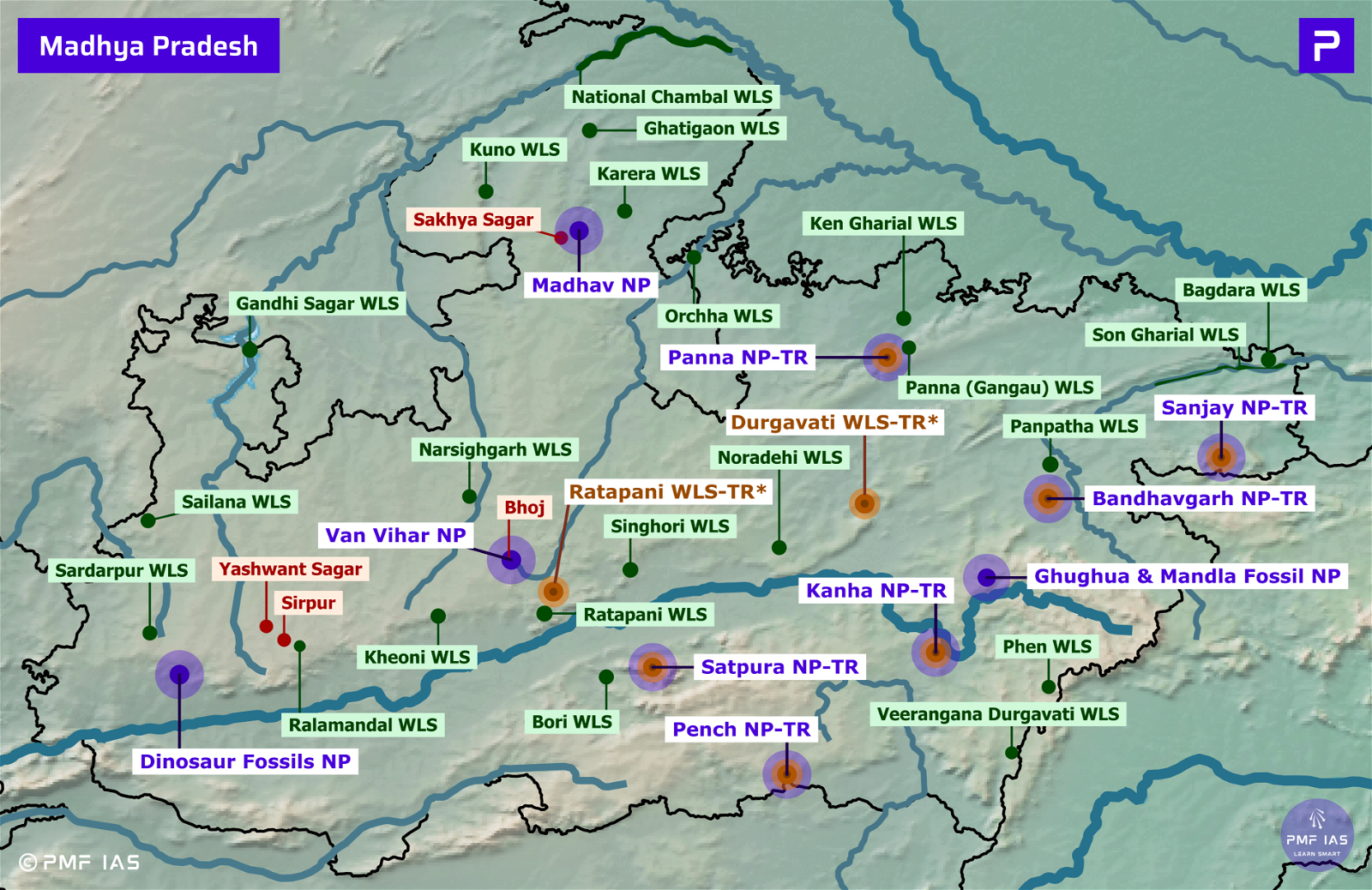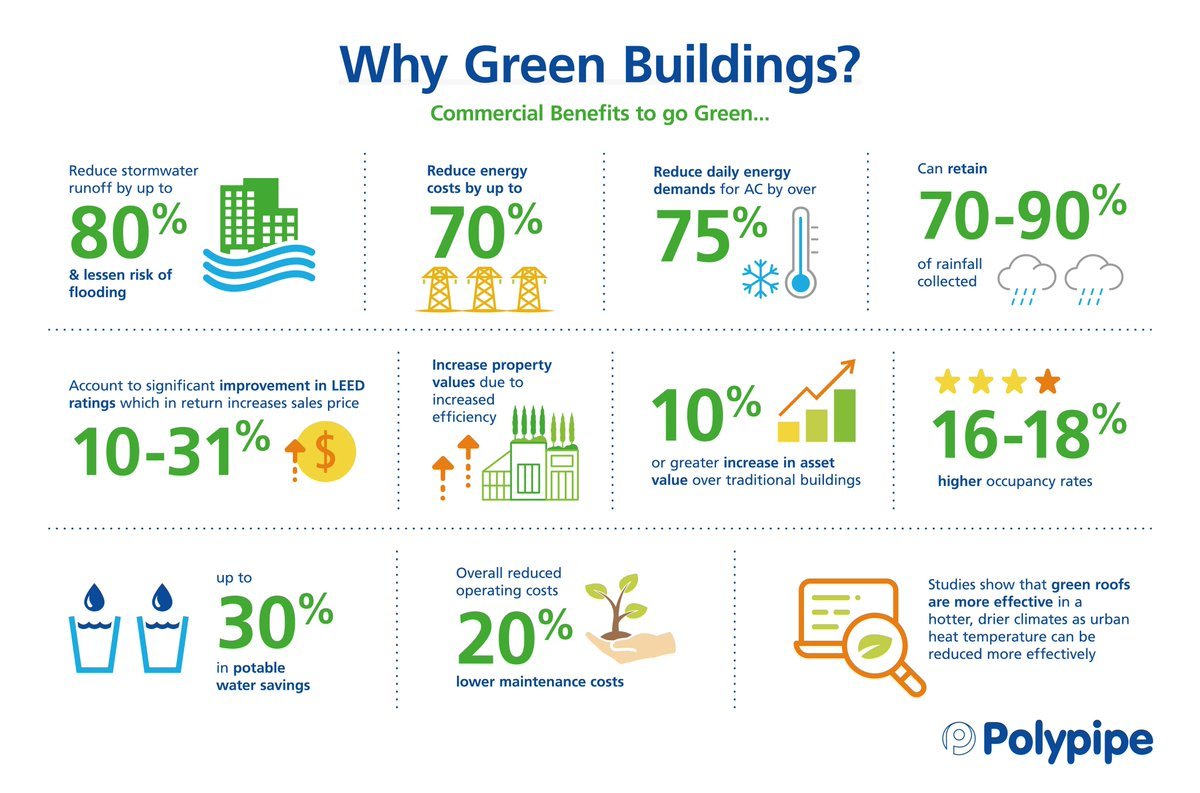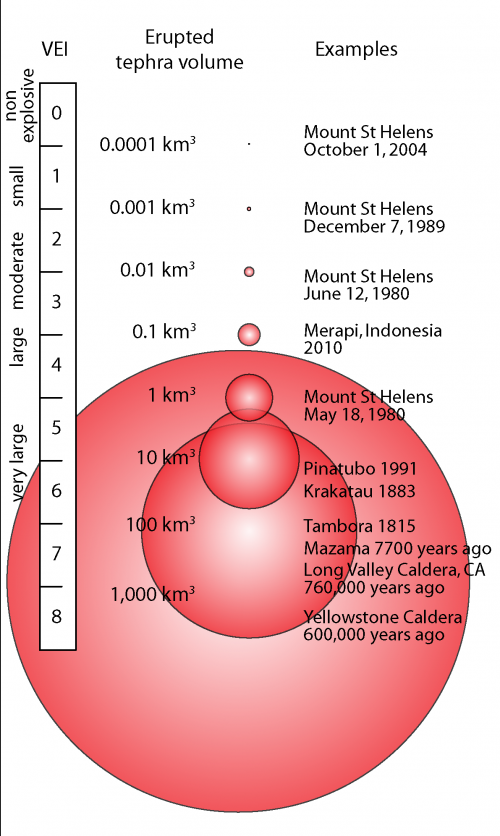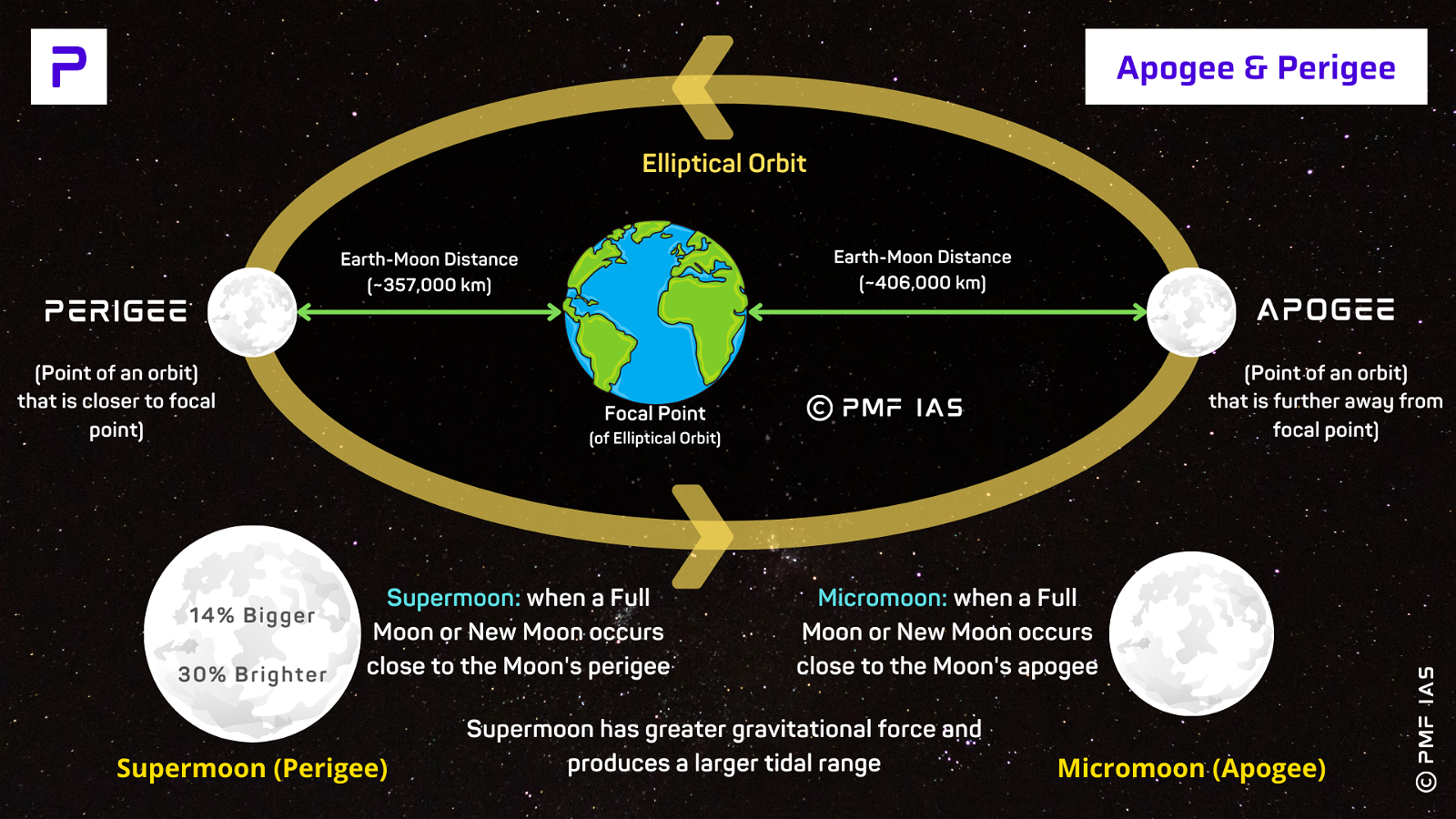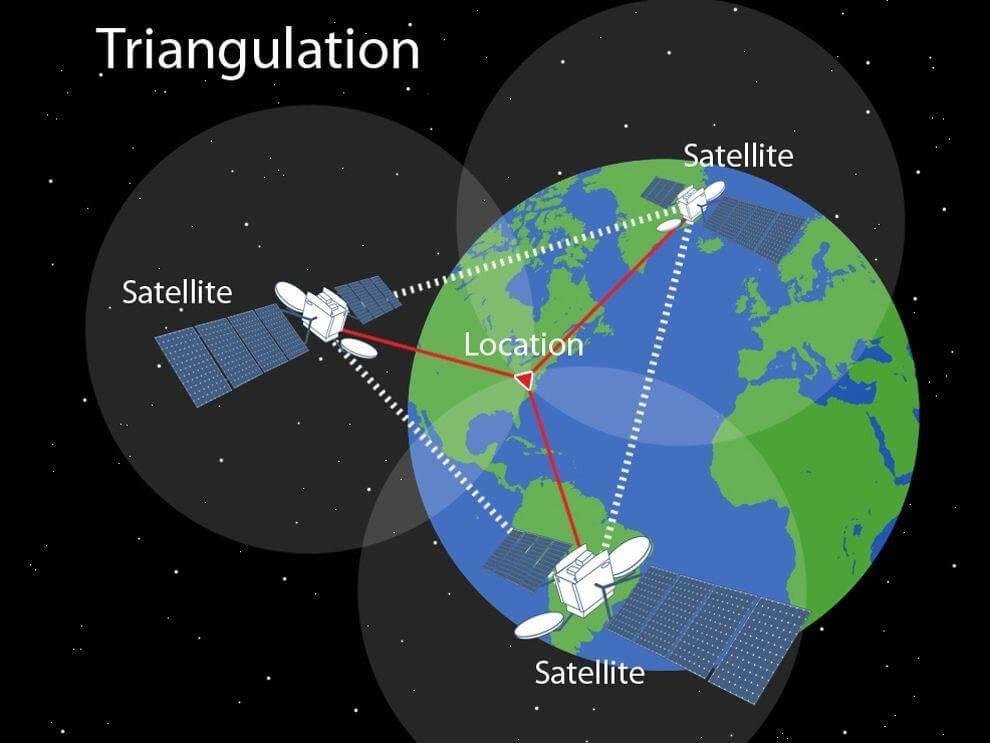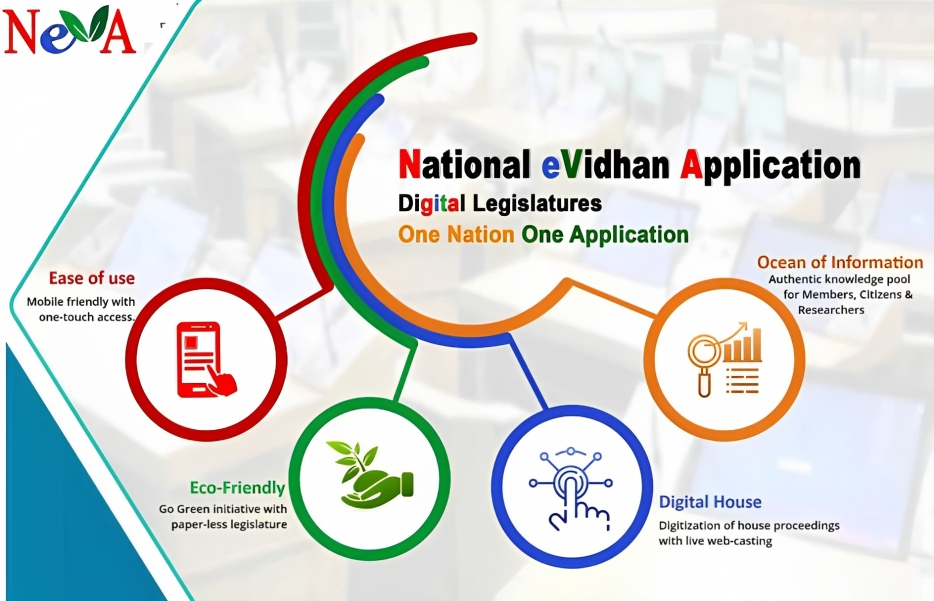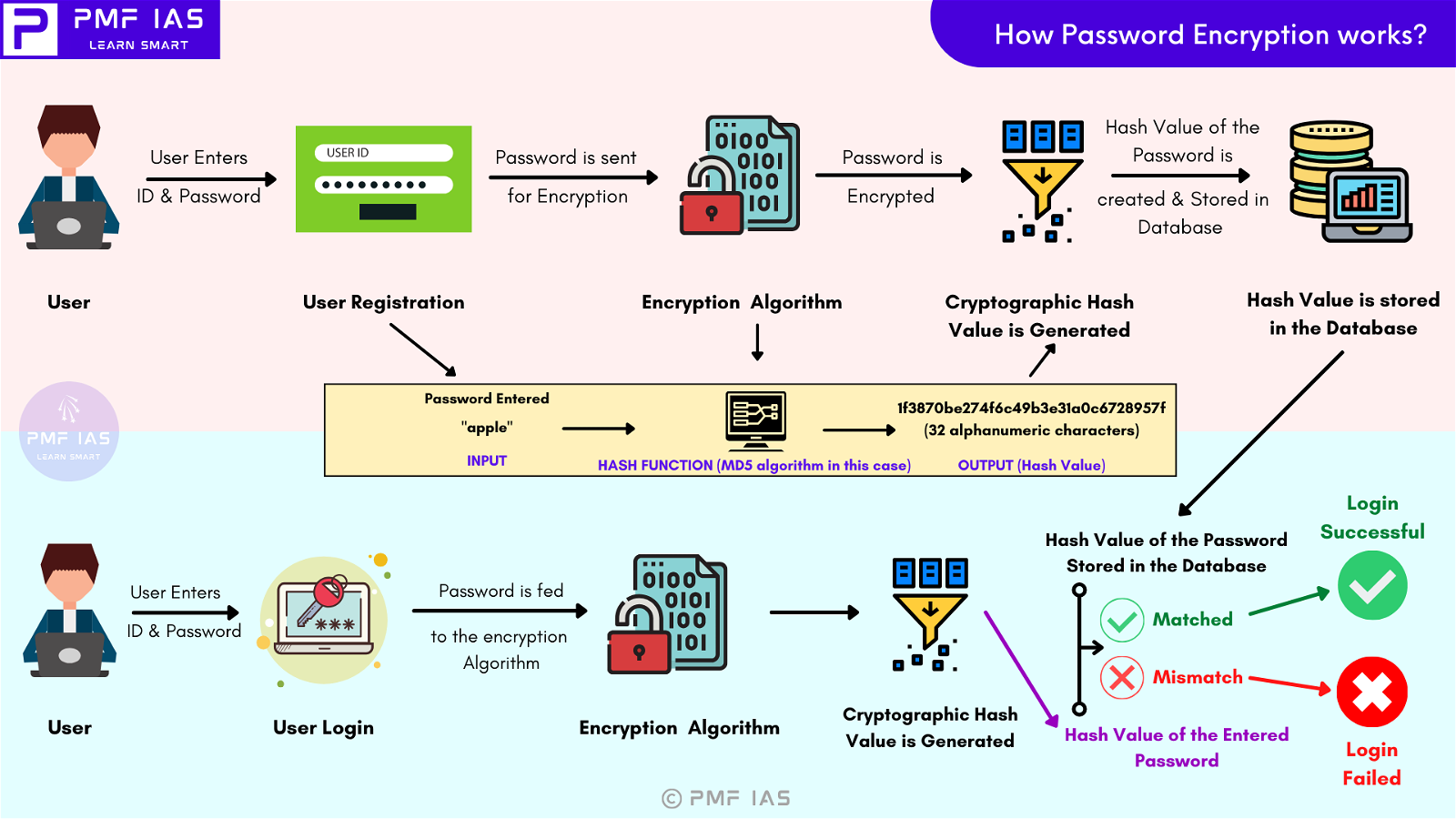
Current Affairs September 12, 2023: Phanigiri Artefacts, Global Symposium on Farmers’ Rights, CBI, LIGO-India Observatory, Picoflare Jets
Subscribers of "Current Affairs" course can Download Daily Current Affairs in PDF/DOC
Subscribe to Never Miss an Important Update! Assured Discounts on New Products!
Must Join PMF IAS Telegram Channel & PMF IAS History Telegram Channel
{GS1 – A&C – Art – 2023/09/12} Phanigiri Artefacts
- Context (TH): The Phanigiri Buddhist artefacts are currently on display at the New York Metropolitan Museum of Art in an exhibition called “The Tree and Serpent.”
- They are a set of archaeological finds from a Buddhist site in Telangana.
- They were discovered in 1942 and date from 200 BCE to 400 CE.
- The artefacts include a variety of objects, like stone gateways (thoranas), sculptures, and inscriptions.
- One thorana is decorated with images of both Mahayana and Hinayana Buddhist thought.
- This suggests that the two schools coexisted at the site.
- The artefacts also provide evidence of:
- Deification of Buddha
- Transition towards canonization and ritual in Buddhist practices

{GS2 – MoAFW – Initiative – 2023/09/12} Global Symposium on Farmers’ Rights
- Context (PIB | TH | AIR): India is hosting the first Global Symposium on Farmers’ Rights (GSFR).
- It is organised by the Secretariat of the International Treaty on Plant Genetic Resources for Food and Agriculture (ITPGRFA) of the FAO, Rome.
- It is being hosted by Ministry of Agriculture and Farmers Welfare (MoAFW) in collaboration with:
- Protection of Plant Varieties and Farmers’ Rights (PPVFR) Authority
- Indian Council of Agricultural Research (ICAR)
- ICAR-Indian Agricultural Research Institute (IARI)
- ICAR-National Bureau of Plant Genetic Resources (NBPGR).
- Objectives of GSFR are:
- To deliberate on issues related to Farmers’ Rights as enshrined in Article 9 of ITPGRFA.
- To recognise the role of farmers in safeguarding agrobiodiversity and global food security by conserving plant genetic resources.
|
Plant Genetic Resources (PGR)
- FAO defines PGR as the entire reproductive material of species with economic or social value, especially for the agriculture of the present and the future, with special emphasis on nutritional plants.
- It includes the reproductive material of:
- Cultivated varieties in current use and newly developed
- Obsolete cultivated varieties
- Primitive cultivated varieties in
- Wild and weed species (near relatives of cultivated varieties)
- Special genetic stocks (includes elite and current cultivated species and mutants)
- It includes generative and vegetative reproductive material like seeds, tissues, DNA, or plants.
Importance of Conservation of Plant Genetic Resources (PGR)
- Food security: PGRs are used to develop crops that are resistant to pests and diseases, tolerant to extreme conditions, and have other desirable traits. This helps achieve food security.
- Fight climate change: PGRs help in developing crops that are tolerant to climate change, such as drought, and flooding.
- Nutritional quality of food: PGRs can be used to develop crops that are more nutritious, such as crops that are high in vitamins and minerals.
- Protect biodiversity: PGRs help to maintain the diversity of plants on Earth, which is essential for the health of the planet.
- Economic benefits: The improved varieties of crops developed using PGRs generate more income for farmers and other stakeholders.
International Treaty on Plant Genetic Resources for Food and Agriculture (ITPGRFA)
- ITPGRFA, a legally binding international treaty, was adopted in 2001 at Rome by FAO.
- The treaty entered into force in 2004.
- It has 149 contracting parties; India is a party to it.
- Objectives:
- Conservation and sustainable use of all PGR for food and agriculture
- Fair and equitable sharing of the benefits arising out of the use of PGR, in harmony with the Convention on Biological Diversity, for sustainable agriculture and food security.
- It is the first legally binding international instrument to formally acknowledge the contribution of indigenous people and farmers as traditional custodians of the world’s food crops.
- Its Governing Body sessions are held biennially.
Protection of Plant Varieties and Farmers’ Rights (PPVFR) Act, 2001
- The GoI has enacted the PPVFR Act 2001:
- To protect farmers’ rights for their contributions to the conservation and development of PGR.
- To give effect to the TRIPS Agreement.
- The Act is in conformity with the International Union for the Protection of New Varieties of Plants (UPOV), 1978.
- Significance: India has been the first country in the world to include Farmers’ Rights in the context of Plant Variety Registration through its PPVFR Act 2001.
Objectives of the PPVFR Act 2001
- Facilitate an effective system for the protection of plant varieties.
- Encourage the development of new varieties of plants.
- Protect the rights of the farmers in respect of their contribution in conserving plant genetic resources.
- Facilitate the growth of the seed industry which will ensure the availability of high-quality seeds.
Rights under the PPVFR Act 2001
- Breeders’ Rights: Breeders will have exclusive rights to produce, sell, market, distribute, import, or export the protected variety.
- They can appoint an agent/licensee and may exercise civil remedy in case of infringement of rights.
- Researchers’ Rights: Researchers can use the registered varieties under the Act for research.
- But repeated use needs prior permission of the registered breeder.
- Farmers’ Rights: A farmer who has evolved or developed a new variety is entitled to registration and protection in like manner as a breeder of a variety.
Indian Council for Agricultural Research (ICAR)
|
{GS2 – MoJS – Project – 2023/09/12} Eastern Rajasthan Canal Project (ERCP)
- Context (TH): Rajasthan CM requested the GoI to confer national project status to the ERCP.
- ERCP is planned to harvest surplus yield available in Southern Rajasthan rivers and transfer to a deficit basin in South-Eastern Rajasthan.
- The surplus water in the sub-basins of Kunnu, Kul, Parvati, Kalisindh, and Mej rivers received during monsoon has to be carried to the sub-basin of Banas, Morel, Banganga Gambhiri, and Parbati rivers.
National Projects
- Eligibility criteria given by the Ministry of Jal Shakti for inclusion of a project under the National Projects (NP) scheme are:
- International projects, where:
- Usage of water in India is required by a treaty
- Planning and early completion of the project is necessary in the interest of the country
- Inter-state projects that are dragging on due to non-resolution of Inter-State issues relating to sharing of costs, rehabilitation, aspects of power production, etc.
- It includes the river interlinking projects
- Intra-state projects with additional irrigation potential of more than two lakh hectares and with no dispute regarding the sharing of water and where hydrology is established
- Extension, renovation, and modernization (ERM) project envisaging extension/restoration of irrigation potential of two lakh hectares.
- International projects, where:
- Inclusion under the NP scheme is also dependent upon approval of the Advisory Committee on Irrigation, Flood Control and Multipurpose (DoWR, RD&GR) and other factors.
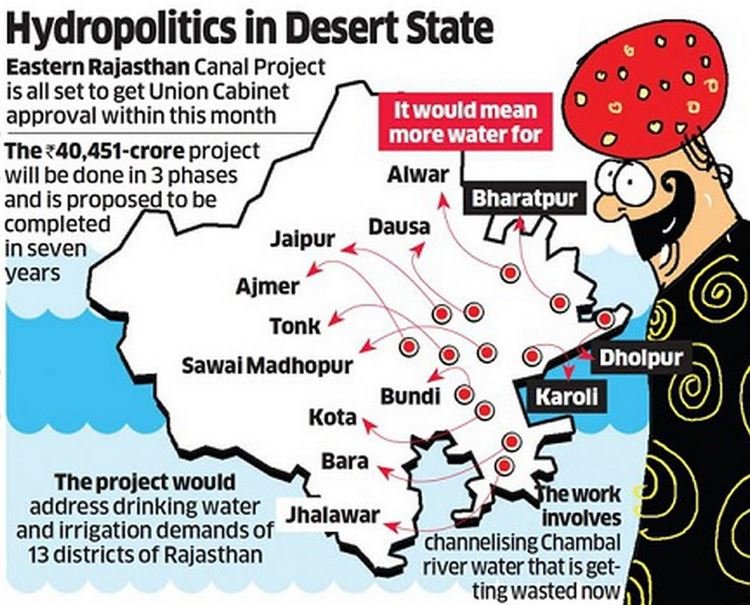
Central Assistance (Grants) for National Projects
|
Category |
Funding Pattern |
| Projects in eight North-Eastern, two Himalayan States (HP and UK), and UTs of J&K and Ladakh | 90 (Central):10 (State) |
| Projects in other States | 60 (Central):40 (State) |
{GS2 – Polity – Acts – 2023/09/12} Places of Worship Act
- Context (TH): SC refused to stay the survey of Gyanvapi Mosque at Varanasi.
- Gyanvapi mosque is located close to the Kashi Vishwanath Temple in Varanasi.
- It was built in the 17th century on the orders of the Mughal emperor Aurangzeb.
- Dispute: Some Hindu groups believe that the mosque was built after destroying the original Kashi Vishwanath Temple.
Timeline of the Gyanvapi Issue
- The first petition of the case was filed in Varanasi court in 1991.
- In 2021, five Hindu women filed a case in Varanasi court seeking permission to conduct daily prayers at a shrine behind the western wall of the mosque complex.
- In 2022, the Varanasi court, appointed Advocate Commissioner Ajay Mishra to carry out an inspection of the site (videography) and submit a report.
- The All-India Muslim Personal Law Board (AIMPLB):
- Termed the court order for videography was a violation of the Places of Worship Act, 1991.
- Challenged the Varanasi court order before the Allahabad HC.
- In June 2023, the Allahabad HC:
- Upheld the Varanasi district court order.
- Said that Hindu groups are not barred by the Places of Worship Act of 1991, and the suit seeking the right to worship inside the Gyanvapi mosque was maintainable.
- In July 2023, the Varanasi district court issued directions for a “scientific investigation” of the mosque premises by the Archaeological Survey of India (ASI).
- The ASI survey will determine if the mosque was built at a place where a temple existed earlier.
- On August 3, 2023, Allahabad HC allowed the scientific survey “in the interest of justice”.
The Places of Worship Act, 1991
- The Act seeks to prevent new claims and disputes over the historical status of places of worship and the land they occupied.
- The Act stated that:
- Religious character of places of worship shall be maintained as it existed on 15th Aug 1947.
- Pending cases of claims on places of worship will be terminated & no new cases can be filed.
- But, legal proceedings can be initiated if the change of status took place after 15th Aug 1947.
- It would also not apply to any suit that was settled before the 1991 act came into force.
Exemptions
- Ayodhya dispute (Ram Janmabhoomi – Babri Masjid in Ayodhya)
- Ancient and historical monuments and archaeological sites and remains that are covered by the Ancient Monuments and Archaeological Sites and Remains (AMASR) Act, 1958.
Archaeological Survey of India (ASI)
|
{GS2 – Polity – Bodies – GoI Agencies – 2023/09/12} CBI
- Context (TH): SC gave verdict that CBI does not require permission to probe pre-2014 cases too.
- Section 6A of the Delhi Special Police Establishment (DSPE) Act mandates the CBI to take prior permission before investigating corruption cases against senior government officials.
- In the Subramanian Swamy Case of 2014, the SC:
- Declared Section 6A of the Delhi Special Police Establishment (DSPE) Act invalid.
- Because it protects one class of officers which violates the right to equality (Article 14 of IC).
- In 2023, SC said that:
- Section 6A of the DSPE Act violated fundamental rights (Part III).
- Once a law is declared to be unconstitutional, then it will be held to be void ab initio (from the beginning).
- So, the SC judgment of 2014 (Dr. Subramanian Swamy Case) has a retrospective effect.
- Because of the retrospective effect, Section 6A of the DSPE Act is not in force from the day of its insertion, i.e., September 11, 2003.
The Central Bureau of Investigation (CBI)
- CBI is a non-constitutional, non-statutory body.
- CBI derives power to investigate from the Delhi Special Police Establishment Act, 1946.
- It is the nodal Indian agency that coordinates investigations on behalf of Interpol Member countries.
- It functions under the Department of Personnel, Ministry of Personnel, Pension and Public Grievance.
Composition of CBI
- The CBI is headed by a director.
- He is assisted by a special director or an additional director and many joint directors, deputy inspector generals (DIG), superintendents of police (SP), and all other ranks of police.
Appointment of CBI Director
- Before the Lokpal Act was legislated, the CBI director was appointed by the DSPE Act.
- Now, the Lokpal Act governs the appointment of the CBI director.
- The Centre appoints the director based on the recommendation of a search committee comprising:
- Prime Minister as the chairperson
- CJI (or SC judge) and
- Leader of the Opposition.
Tenure
- The director of CBI has been provided security of two-year tenure by the CVC Act, 2003.
Powers / Functions
- The Central Government can authorise CBI to investigate a crime in a state but only with the consent of the concerned State Government.
- The Central police cannot investigate or enter the state without consent since police and public order are state subjects.
- CBI can suo-moto investigate offenses only in the Union Territories (including Delhi).
- The SC and HCs, however, can order the CBI to investigate a crime anywhere in the country without the consent of the State.
Types of Consent
- There are two kinds of consent:
- Case-specific
- General
- General consent is given to help the CBI seamlessly investigate corruption cases against central government employees in the concerned state.
- Otherwise, it would require consent in every case.
- States, including WB, Rajasthan, Kerala, and Maharashtra, have withdrawn the general consent.
- It means the CBI needs case-specific consent to register any fresh case against a Central Government official or a private person in these states.
Case Laws
- In Vineet Narain’s judgment of 1998:
- The tenure of two years for CBI Director from the day he assumed office.
- CBI Director cannot be transferred except with the previous consent of the high-level committee.
- In the Union of India vs. C. Dinakar case (2004):
- IPS officers of the senior most four batches in service shall be eligible for consideration for appointment to the post of CBI Director.
- In Prakash Singh’s case (2019):
- An officer with less than six months to retire should not be appointed as police chief.
{GS2 – Polity – Bodies – Statutory – 2023/09/12} Mandatory Hallmarking
- Context (PIB I MINT): The third phase of the mandatory hallmarking comes into force in September 2023 and will cover an additional 55 new districts (a total of 343 districts).

- Hallmarking is the process of accurately determining and officially recording the content of precious metals in articles, serving as a guarantee of purity or fineness.
- In India, this applies to gold and silver items.
- Registered jewellers receive a certificate based on purity tests conducted at certified centres.
- If a hallmarked jewellery item is found to be of lower purity than what is marked on it, then the buyer is entitled to compensation under BIS Rules 2018.
- The Mandatory Hallmarking initiative is implemented by the Bureau of Indian Standards (BIS).
Bureau of Indian Standards (BIS)
- BIS is the national standards body of India under the Department of Consumer Affairs, Ministry of Consumer Affairs, Food & Public Distribution.
- It was established by the Bureau of Indian Standards Act.
|
{GS2 – Polity – IC – Legislature – 2023/09/12} Bharatiya Nyaya Sanhita (BNS) 2023 on False Promise of Marriage
- Context (TH I IE): The Bharatiya Nyaya Sanhita (BNS), 2023 aims to tackle issues related to sexual relationships based on false marriage promises, with Section 69 of BNS having significant changes.
Section 69 of BNS – Sexual Intercourse on False Promise of Marriage
- Section 69 addresses the issue of sexual relationships based on false promises of marriage, creating two offences (Both offences carry penalties of up to ten years of imprisonment):
- by deceitful means
- by a false promise to marry
Need of Section 69 of BNS
- Historically, cases of sexual intercourse based on false promises of marriage were addressed using other sections of criminal law (not by a separate section for it), leading to ambiguity.
- The prevalence of such cases and the legal ambiguity surrounding the distinction between a ‘false promise’ and a ‘breach’ of promise to marry necessitated the introduction of Section 69.
How have Courts Previously Dealt with Cases of Consent and Rape under IPC?
- In handling cases of ‘False Promise of Marriage,’ courts have traditionally relied on existing laws like Sections 375 and Sections 90 of the Indian Penal Code (IPC).
- The courts differentiated between a ‘false promise’ made with the intent to deceive and a ‘breach’ of promise made in good faith but not fulfilled.
- In Dileep Singh vs. State of Bihar, SC underscored the need for establishing a lack of intention to marry for the offence to be considered rape.
|
Concerns Regarding Section 69 of BNS
- Section 69 may promote endogamy by shifting the focus from real harm and abuse.
- The Bill’s vagueness and discretionary nature could perpetuate uncertainty and reliance on gender norms, potentially re-victimizing women.
- While the Bill specifies the consequences of the crime, it may overlook the harm suffered by women, contributing to a cycle where justice remains elusive.
{GS3 – S&T – India – 2023/09/12} LIGO-India Observatory
- Context (IE): At Maharashtra’s Hingoli, the LIGO-India observatory is going to be set up.
- LIGO-India will be the third node of the LIGO Laboratory in the US, which has observatories in Hanford (Washington) and Livingston (Louisiana).
- LIGO-India is expected to commence operations by 2030 with an expected life of 30 years.
- Significance: Once completed, LIGO-India will join a global network of gravitational-wave observatories that includes Virgo in Italy and KAGRA in Japan.
Gravitational Waves
- Gravitational waves are invisible ripples in the fabric of space-time that travel at the speed of light (186,000 miles per second).
- These waves squeeze and stretch anything in their path as they pass by.
- The existence of these waves was predicted by Albert Einstein in his General Theory of Relativity.
|
Causes of Gravitational Waves
- The most powerful gravitational waves are created when objects move at very high speeds.
- Some examples of events that could cause a gravitational wave are:
Importance of Gravitational Waves
- Most knowledge about universe is based on light and other EMR waves emitted by heavenly bodies.
- But there are vast spaces in the universe that do not emit anything and are dark to humans.
- Gravitational waves can provide information about this dark parts of universe.
- Faraway cosmic objects which cannot be detected visually (like black holes) can be detected and studied with the help of gravitational waves.
- The discovery of gravitational waves helps to study the nature and evolution of the universe
Laser Interferometer Gravitational Observatory (LIGO)
- LIGO’s mission is the direct detection of gravitational waves for the development of astrophysics.
- LIGO detectors use laser interferometry to measure the distortions in space-time occurring between stationary, hanging masses (mirrors) caused by passing gravitational waves.
- It is funded by the U.S. National Science Foundation.
- It is operated by:
- California Institute of Technology (Caltech)
- Massachusetts Institute of Technology (MIT)
- Achievement: LIGO facilities in the US detected gravitational waves for the first time in 2015.
- A feat that won the Nobel Prize in Physics.
How does the LIGO Work?
- When gravitational waves propagate, they squeeze space-time.
- Everything contained in space-time also feels the squeeze.
- A spherical body like Earth, when squeezed from one side tends to elongate in the other side, just like a rubber ball – this behaviour is used by LIGO to detect gravitational waves.
- LIGO comprises two 4-km-long vacuum chambers, built perpendicular to each other in L-shape.
- Highly reflective mirrors are placed at the end of the vacuum chambers.
- Light rays are released simultaneously in both vacuum chambers.
- They hit the mirrors, get reflected, and are captured back.
- In normal circumstances, the light rays in both chambers would return simultaneously.
- But when a gravitational wave arrives, one of the chambers gets a little elongated, while the other one gets squished a bit. So, light rays do not return simultaneously, and there is a phase difference.
- The presence of a phase difference marks the detection of a gravitational wave.


Significance of LIGO-India
- The instruments at LIGO observatories very sensitive and can easily get influenced by events like earthquakes, landslides, or even the movement of trucks. All these influences produce false readings.
- That is why multiple observatories are needed to revalidate the signals.
- The chances of two observatories, located in different geographies, producing the exact same false reading are negligible.
Hingoli: The Location for LIGO-India Observatory
- Hingoli is in the Marathwada region, on the banks of the Godavari River in Maharashtra.
- It is an important religious place, Aundha Nagnath, one of the 12 main Jyotirlingas is located here.

Reasons Why Hingoli was Selected for LIGO-India
- Because of the sensitive instruments, LIGO observatory can be set up in places which are:
- Seismically inactive
- Low noise (as little human activity as possible)
- Relatively flat
- Hingoli satisfies all these requirements.
Benefits for Hingoli from LIGO-India
- Direct job creations for locals.
- Development of scientific temperament among local students.
{GS3 – S&T – Universe – 2023/09/12} Picoflare Jets
- Context (TH): Solar Orbiter Aircraft has made a significant discovery in solar research.
- The data from this mission have found small-scale Pico Flare Jets from the sun’s outer atmosphere.
- These jets were observed within emissions from a coronal hole and lasted only a few dozen seconds.
- Despite their brief duration, these pico flare jets provide enough energy to solar winds.
- They are named ‘pico’ because they carry approximately one-trillionth the energy of the largest flares the sun is capable of producing.
- Significance: These pico jets could be the long-sought-after source of the solar wind.

Solar Atmosphere
Solar Emissions
|
Solar Orbiter Aircraft
- It is a joint mission by the European Space Agency and NASA, launched in 2020.
- Close Proximity: It will take images of the Sun from closer than any spacecraft before.
- Instruments: It contains six remote-sensing instruments and four sets of in situ instruments.
- Objectives:
- To observe the Sun’s 11-year cycle of rising and subsiding magnetic activity.
- To study the upper layer of its atmosphere, the corona.
Sunspot
|
Effects of Solar Flare On Earth
- Auroras: Solar flares can cause beautiful auroras.
- Radiation: They produce high-energy particles and radiation.
- Ionization: Solar flares can ionize atoms and molecules in Earth’s atmosphere.
- Communication Disruption: They can interfere with short-wave radio communications.
- Satellite Impact: Solar flares can rain extra radiation on satellites.
- Power Grids: Increased electromagnetic activity due to solar storms can disrupt power grids.
- GPS Disruption: It can alter the upper atmosphere, disrupting signal transmission from GPS satellites.
{Prelims – Defence – Misc. – 2023/09/12} MOU Between Indian Navy and Uber
- Context (PIB): Indian Navy signed a Memorandum of Understanding (MoU) with M/s Uber.
- The MoU aims to provide reliable, convenient, safe, and economical mobility solutions for Naval personnel and families across the country.
- This MoU aligns with CNS’s vision of ‘Happy Personnel’ under ‘SHIPS FIRST’.
- It is a maiden initiative in the Armed Forces.
- It is also in furtherance of GoI’s ‘Digital India’ vision.
- M/s Uber will extend the following benefits to Indian Naval personnel and their families: –
- A personalised profile on the Uber App.
- Premier Executive Cab Category providing surge price protection during peak office hours.
- Availability of Top-rated drivers.
- Zero cancellation fee on all Uber rides.
- 24×7 Premium business support.
{Prelims – PIN – World – 2023/09/12} Drone Attacks in Sudan
- Context (TH): Drone attack kills many on an open market south of Sudan’s capital, Khartoum.
- Sudan has been rocked by violence since mid-April, 2023 due to tensions between the country’s military and the paramilitary Rapid Support Forces (RSF).
- In the western Darfur region (the scene of a genocidal campaign in the early 2000s), the conflict has morphed into ethnic violence, with the RSF and allied Arab militias attacking ethnic African groups.
Sudan
- Sudan’s history goes back to the pharaonic period.
- It was the largest country in Africa until it split into two countries.
- In 2011, southern Sudan voted for independence.
- This followed decades of struggle by the Christian and Animist South against the Arab Muslim North.
- Modern Sudan has been a site of conflict and instability since independence.
- It is the third-largest country in Africa, after Algeria and Democratic Republic of the Congo.
- Sudan is bordered by:
- Egypt, Libya, and Republic of the Congo to the north
- Chad to the east
- the Central African Republic and South Sudan to the south
- the Democratic Republic of the Congo to the west,
- The Nile River system is the dominant physical feature.
- It enters the country as the White Nile until it is joined by the Blue Nile at Khartoum.






![PMF IAS Environment for UPSC 2022-23 [paperback] PMF IAS [Nov 30, 2021]…](https://pmfias.b-cdn.net/wp-content/uploads/2024/04/pmfiasenvironmentforupsc2022-23paperbackpmfiasnov302021.jpg)

